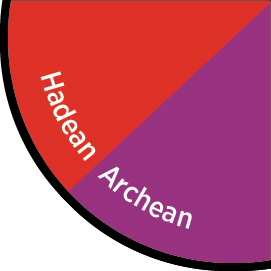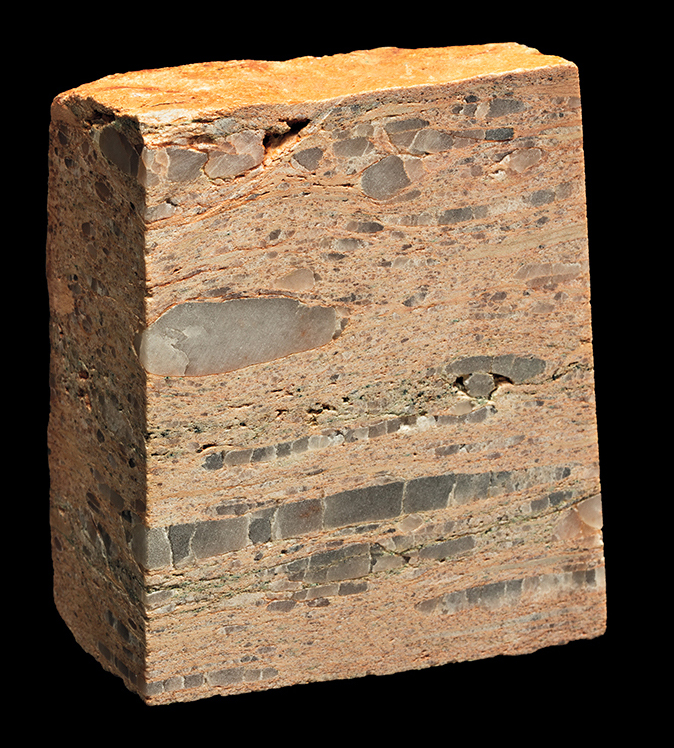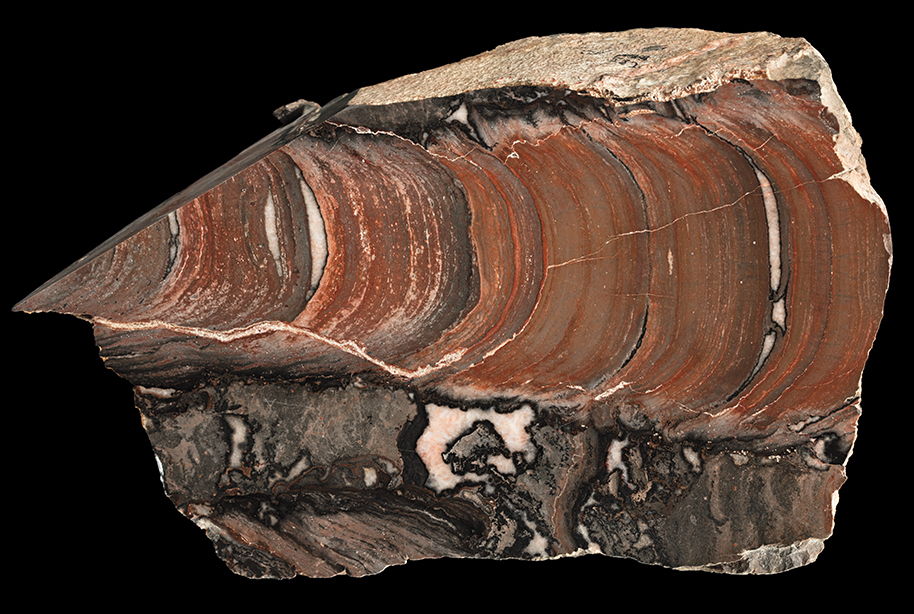

The early Earth was very different from today’s world: in fact, it was a hot and hellish place. Forming about 4.5 billion years ago, the molten planet cooled fairly quickly. Within a billion years, the earliest signs of life—simple, single-celled microbes—arose in water, and life stayed basically the same for another billion years. Around 2.5 billion years ago, at the end of the Archean Eon, bacteria began to turn sunlight into energy (through photosynthesis) and generate oxygen in the atmosphere and ocean. That oxygen supported more complex organisms—which set the stage for future, even more complex life on Earth. It took 4 billion years after the Earth solidified for life to get big enough that—had you been around—you’d have been able to spot it without a microscope.

Radioactive elements in zircon minerals like this sample serve as “rock clocks”—they reveal how long ago the rock formed. Scientists can use such dates to figure out the age of fossils found in the rocks, and even when certain events on Earth occurred.

These ribbonlike strands of Grypania may represent Earth’s oldest-known fossils of eukaryotes (organisms with complex cells that each enclose a nucleus). This is a photosynthetic algae that’s more than 2 billion years old.

Mats of aquatic microbes living in shallow water around a billion years ago became sandwiched between sediment layers, eventually forming mound-shaped fossils called stromatolites like this Corophyton.